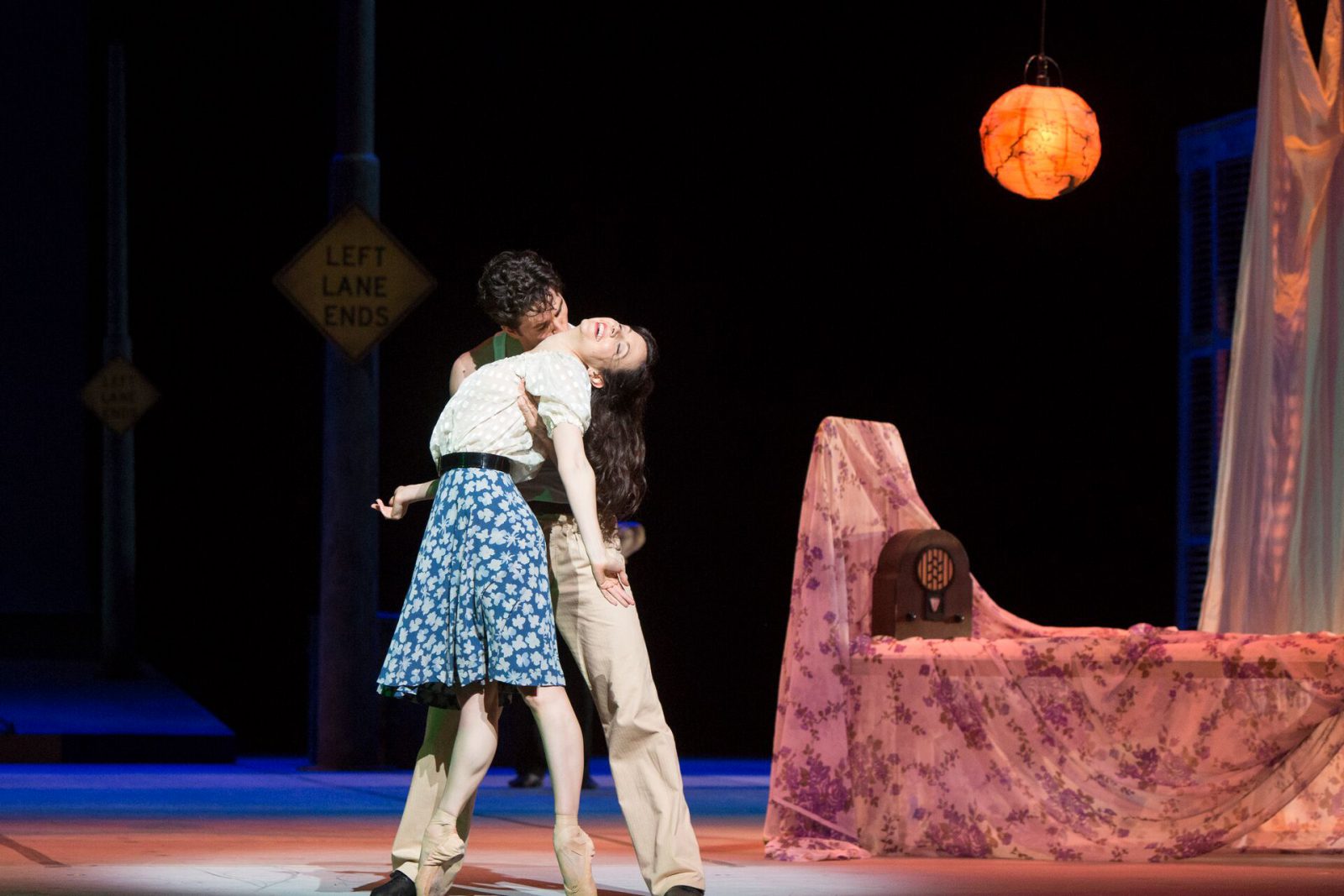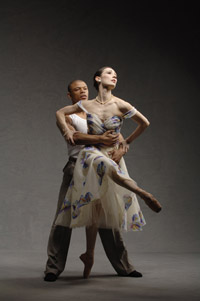The National Ballet of Canada’s premiere of choreographer John Neumeier’s A Streetcar Named Desire is an aesthetic triumph and a thought-provoking comment on the destructive nature of repressed sexuality and violence.
The original 1947 play by Tennessee Williams begins when Blanche Dubois, a widowed Southern belle, arrives in New Orleans to visit her sister, Stella, who has married Stanley Kowalski. Over the course of the play, we learn that Blanche and Stella’s home, the plantation Belle Rêve, has been lost to creditors. Stanley becomes suspicious of Blanche, digging into her past and learning that she may have become overly free with her sexual favours. In a rage, Stanley rapes the fragile Blanche, pushing her to insanity.
Neumeier liberally adapts his source material. Blanche’s mental instability frames the ballet, and Act I plays out in flashback to Belle Rêve. In the stark opening scene, Blanche (Sonia Rodriguez) sits on an iron bed, wearing white and with white curtains bearing the words “NEW ORLEANS SANITORIUM” draped behind her. Rodriguez dances, delirious and shaky, then in slow, languid movements. Three men representing her sordid past, Shaw, A Soldier and Kiefaber (Brent Parolin, Dylan Tedaldi and Jonathan Renna), emerge in liquid, suggestive movements, taunting Blanche and manipulating her body in a sleazy pas de quatre.
The scene turns to Blanche’s memory of Belle Rêve and her wedding to the closeted Allan Grey (Skylar Campbell). The corps de ballet catches the eye as Blanche’s wedding guests, the women in frothy pink dresses and hats, the men in white suits. They dance, coordinated and unhurried, a complement to Sergei Prokofiev’s dreamy “Visions Fugitives” Op. 22. Campbell stands out in his black suit and expressive dancing, his eyes following Grey’s “friend” (Francesco Gabriele Frola) around the stage. Grey’s sexuality – only alluded to in the play– takes centre stage as a torment in Blanche’s life. Grey’s lover mirrors his steps in an emotive, drawn-out pas de deux, the two men gliding along with the corps de ballet’s coordinated movements as Blanche looks on, concerned. When Blanche and her husband start their own dance, Grey’s lover watches them longingly from the side.
Act II interprets the events of Williams’ play to “Symphony No. 1” by Alfred Schnittke, a brash, dynamic piece that incorporates jazz elements. The act opens on Stanley and Stella’s lovemaking, a heated and chaotic pas de deux danced by Guillaume Côté and Jillian Vanstone characterized by natural, playful movements, in contrast with the formality and tension of the dancing in Act I. The scene is again simple: an iron bed in the middle of the stage and ceiling fans spinning above the couple, suggesting the New Orleans summer heat. Boxing gloves hang off the end of the bed, a symbol of the bravado that Stanley brings from the ring to the bedroom.
Throughout the act, Côté shines as Stanley. A far cry from his Prince Charming in this season’s production of Cinderella, Côté’s Stanley is a dark character, a man whose aggressive masculinity glides from the comical to the pathetic to the pernicious. Early in the act, Stanley boxes with his friend Mitch (Evan McKie) before a captive audience. When Stanley wins, he preens, beating his chest with his fists. His machismo has a dangerous side, and Stanley soon mirrors the predatory desire of Blanche’s three suitors. The rape scene contrasts the pas de deux danced by Côté and Vanstone earlier in the act; if Stanley’s greasy lovemaking with Stella was tempered by mutual desire and playfulness, Neumeier chooses to expose Stanley’s aggression in full force in the protracted scene with Blanche. Côté’s dancing is acrobatic and forceful – Stanley stalks Blanche around the stage like a cat torturing his prey – while Rodriguez successfully conveys Blanche’s terror through hurried, panicked movements and evocative facial expressions (at one point, she opens her mouth wide, screaming silently at the audience).
Neumeier triumphantly synthesizes his talents in this ballet, not only as choreographer, but also as costume, set and lighting designer. The sets and costumes are full without being ostentatious – even the plantation wedding remains austere. This contrasts with other story ballets presented this season, namely Cinderella and Pinocchio, which veered toward the cluttered. Similarly, Neumeier chooses simple dramatic elements for this production – Blanche’s suitors call out to her lewdly, shouting slurs and even singing. Neumeier uses their voices sparingly and effectively to foreshadow Stanley’s own violence and provide a glimpse into the reasons for Blanche’s instability.
While the ballet is framed as a study of one woman’s descent into madness, it also highlights the psychological trials of its male characters, notably Grey’s closeted homosexuality and Stanley’s destructive masculinity. The complexities of their desires allow for some of the strongest performances by this season’s principal dancers and soloists.
The National Ballet of Canada performs A Streetcar Named Desire from June 3 through 10 at the Four Seasons Centre for the Performing Arts, Toronto.




